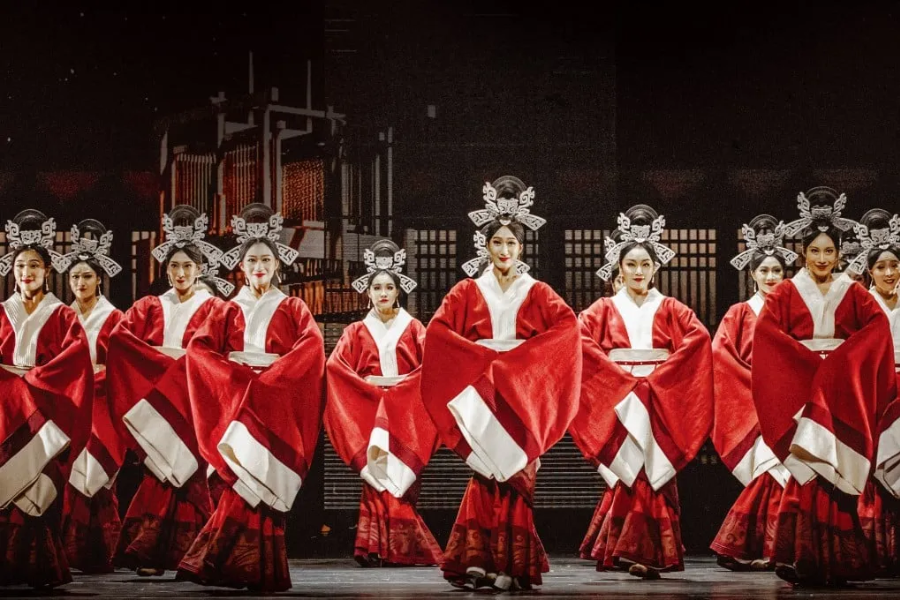Amiibayin: Unveiling Its Origins and Cultural Significance
Amiibayin is a captivating term that highlights the immense diversity of cultural practices across the globe. Although the term may not be familiar to many, it holds profound cultural importance and reflects the values and heritage of the communities that practice it. Understanding where amiibayin originates from reveals more than just its geographical roots; it provides a lens through which we can appreciate the intricate cultural tapestry of its origins. This article delves into the roots of amiibayin, exploring its historical, social, and cultural significance.
What is Amiibayin, and Where Does It Originate?
Amiibayin originates from the Philippines, a country celebrated for its rich cultural diversity and deep historical traditions. The term “amiibayin” encapsulates a blend of indigenous and modern practices, reflecting the evolution of Filipino culture over centuries. Rooted in communal values, it symbolizes the resilience and adaptability of a society that has faced colonization, globalization, and cultural shifts while preserving its essence.
The Philippines, an archipelago of over 7,000 islands, has a vibrant cultural history shaped by indigenous customs, Asian trade influences, and centuries of Spanish and American colonization. Amiibayin—while not as widely recognized as other Filipino traditions—is a testament to the enduring strength of local heritage, particularly in rural communities where such customs thrive.
Tracing the Historical Roots of Amiibayin
The roots of amiibayin lie in the pre-colonial era, when indigenous Filipinos practiced various rituals and traditions to honor their deities, ancestors, and the natural world. These early customs often involved communal gatherings, storytelling, and the use of symbolic artifacts. Such practices fostered a strong sense of unity among members of the community, laying the groundwork for what would later be recognized as amiibayin.
When Spanish colonizers arrived in the 16th century, many indigenous traditions were suppressed or altered to align with Christian beliefs. However, certain practices, including amiibayin, managed to survive in remote regions where colonial influence was less pervasive. This resilience highlights the determination of Filipino communities to preserve their cultural identity despite external pressures.
The Evolution of Amiibayin in Modern Society
In contemporary Philippine society, amiibayin has experienced both challenges and opportunities for growth. Urbanization and modernization have led to the decline of many traditional practices, as younger generations gravitate toward modern lifestyles. However, in rural areas, amiibayin continues to thrive, serving as a cultural anchor for communities seeking to preserve their heritage.
In recent years, there has been a renewed focus on safeguarding Filipino cultural practices, including amiibayin. Scholars, artists, and cultural advocates have integrated elements of this tradition into modern forms of expression, such as theater, music, and visual arts. By blending traditional and contemporary elements, they ensure that amiibayin remains relevant and celebrated in an ever-changing world.
Amiibayin and Its Linguistic Roots
The term “amiibayin” is more than just a word; it is a linguistic artifact that reflects the values and beliefs of its community. In many cultures, names and terms carry deep social significance, often tied to historical events, spiritual beliefs, or communal aspirations. The linguistic roots of amiibayin reveal its connection to the Filipino language, which itself is a blend of indigenous dialects and foreign influences.
Understanding the linguistic components of amiibayin provides insight into the Filipino worldview, where language serves as a bridge between the past and the present. It underscores the importance of preserving native terms and expressions as a way of honoring cultural heritage and fostering a sense of identity.
Cultural Significance of Amiibayin
The cultural significance of amiibayin extends far beyond its linguistic roots. It embodies the ideals of community, resilience, and spirituality, which are central to Filipino identity. In communities where amiibayin is practiced, it serves as a unifying force, bringing people together to celebrate their shared heritage and values.
Amiibayin also highlights the importance of oral traditions in preserving cultural memory. Through storytelling, rituals, and communal activities, the essence of amiibayin is passed down from one generation to the next, ensuring its survival in an increasingly modernized world. This emphasis on continuity reflects the Filipino commitment to preserving their cultural legacy.
The Role of Religion in Amiibayin
Religion plays a significant role in the origins and practice of amiibayin. The Philippines is predominantly Catholic due to centuries of Spanish colonization, but it also has a rich history of indigenous spiritual beliefs. This blend of religious influences is evident in the practice of amiibayin, which incorporates elements of both pre-colonial rituals and Christian traditions.
In some communities, amiibayin customs focus on honoring nature deities or ancestral spirits, reflecting the animistic beliefs of early Filipinos. In others, the tradition has been adapted to include Christian saints and religious celebrations. This syncretism illustrates the adaptability of Filipino culture and its ability to integrate diverse influences while maintaining its core identity.
Social Significance of Names in Amiibayin
Names and terms hold profound significance in the practice of amiibayin. They serve as markers of identity, connecting individuals to their ancestors and community. In Filipino culture, names often carry deep meanings, reflecting familial ties, historical events, or spiritual beliefs.
The term “amiibayin” itself may symbolize more than just a tradition; it represents the collective memory and values of the people who practice it. By exploring the social significance of names in amiibayin, we gain a deeper understanding of how language and tradition intertwine to shape cultural identity.
Amiibayin in the Global Context
In today’s interconnected world, traditions like amiibayin are increasingly influenced by globalization and cross-cultural exchange. While this has led to the spread of Filipino culture beyond its borders, it has also posed challenges to the preservation of local practices.
Filipino diaspora communities have played a crucial role in keeping traditions like amiibayin alive. By sharing their cultural heritage with others, they ensure that the essence of amiibayin continues to resonate with future generations. This global reach underscores the universal appeal of Filipino culture and its ability to inspire and connect people from diverse backgrounds.
Challenges in Preserving Amiibayin
Preserving traditions like amiibayin requires concerted efforts from individuals, communities, and institutions. One of the biggest challenges is the rapid pace of modernization, which often leads to the erosion of traditional practices. Younger generations may view such customs as outdated, opting instead for modern lifestyles that align with global trends.
To address this, cultural advocates have emphasized the importance of education and awareness. By incorporating traditional practices into school curricula and community programs, they aim to instill a sense of pride and appreciation for Filipino heritage among the youth. Additionally, collaborations with artists and media platforms have helped bring traditions like amiibayin to a wider audience.
Amiibayin and Cultural Resilience
Despite the challenges, the continued practice of amiibayin is a testament to the resilience of Filipino culture. It reflects the strength and adaptability of communities that have faced numerous historical and social changes. By preserving and celebrating traditions like amiibayin, Filipinos reaffirm their commitment to cultural identity and heritage.
The adaptability of amiibayin is evident in its integration into modern creative expressions. From visual arts to digital media, the tradition has found new ways to thrive, demonstrating its relevance in today’s dynamic cultural landscape. This resilience serves as an inspiration for other communities seeking to preserve their own heritage in the face of globalization.
The Future of Amiibayin
Looking ahead, the future of amiibayin depends on the collective efforts of individuals and institutions to preserve and promote this cultural practice. By fostering a deeper understanding of its historical and social significance, communities can ensure that amiibayin remains a vibrant part of Filipino identity.
Innovations in technology and media also offer new opportunities for preserving and sharing traditions like amiibayin. Digital platforms can serve as valuable tools for documenting and promoting cultural practices, reaching a global audience and inspiring greater appreciation for Filipino heritage.
Final Words
Amiibayin is more than just a tradition; it is a symbol of the rich cultural heritage of the Philippines. Rooted in history and resilience, it reflects the values and identity of the Filipino people. While modernization poses challenges to its preservation, the continued practice of amiibayin underscores the enduring strength of cultural heritage.
Understanding where amiibayin originates from provides valuable insights into the Philippines’ vibrant history and diverse cultural landscape. By celebrating and preserving this tradition, Filipinos reaffirm their commitment to honoring their past while embracing the future. Amiibayin serves as a reminder of the power of culture to unite, inspire, and endure across generations.
Unlock premium guest posting opportunities to boost your brand at GuestDraz.com.














Post Comment